I absolutely adore balsamic vinegar. Balsamic vinegar and I met in the 1980s and have been best friends ever since. Balsamic vinaigrette is a staple at my house, and I’m a threat to drizzle it on anything at all. (I’m not kidding, I often have it on tomato cheese toast at breakfast.)
Balsamic vinegar is originally a by-product of winemaking from Modena, Italy. Made from grape must (skins, seeds, and stems left from squeezing grapes) and aged in wooden barrels, it’s serious business in Italy, still. I’ve told y’all before about working at a lovely restaurant that leaned heavily on Northern Italian cuisine, and what I learned there. Balsamic vinegar remains one of my favorite takeaways.
Balsamic vinegar is dark, complex, and slightly sweet, and it’s aged slowly. The very best balsamic vinegars are aged 12 years or longer, and they’re thick, syrupy, and quite expensive. They’re used very sparingly, and they liven up, well, everything. Are those super-long aged balsamic vinegars better than the balsamic glaze recipe below? Yes. Is the next best thing the balsamic glaze below? Also, yes. I keep both balsamic vinegar and homemade Balsamic Glaze on hand pretty much all the time. Balsamic Glaze is a simple reduction of balsamic vinegar, it’s easy to make, and it lasts indefinitely at room temperature, but it won’t be around that long.
So why bother making a balsamic reduction when you can find bottles labeled “balsamic glaze” in the store? Isn’t that the same thing?
Balsamic Glaze is basically a balsamic reduction, but the commercial versions typically have added flavors, colors, thickeners, stabilizers, and sometimes preservatives. It’s hard to understand why those are necessary when the homemade version is beautiful, tastes great, and lasts a super long time. Thickeners aren’t needed, but let’s address the stabilizers. It’s true that a balsamic reduction can separate a little after sitting for quite a while–think months. There’s a sure-fire way to fix that, though, if it happens to you: shake it up before using.
What sort of balsamic vinegar should you use? You should use one you like. The reduction pictured above was made with Monari Federzoni Balsamic Vinegar of Modena that I buy at my local grocery for about $5.00 per 16-ounce bottle in 2024.
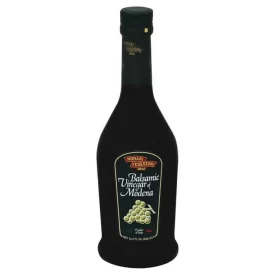
Reducing balsamic vinegar is pretty straightforward. Put it in a saucepan, bring it to a low boil, then simmer uncovered on low until it’s reduced by two-thirds. Sometimes reducing yields a sour and somewhat bitter result. Taste the reduced vinegar to check. If it’s unpleasantly tart, add a little brown sugar to balance it out. Stir to dissolve and taste again. It usually takes no more than a tablespoon.
Balsamic Glaze is a finishing condiment. Use it on sliced tomatoes, tomato bruschetta, caprese salad, hamburgers, steaks, roast chicken, grilled meats, pork roast–they all benefit from a drizzle of this delicious reduction. If you really want to impress people, drizzle it on cheesecake topped with strawberries. Or Stuffed Figs.
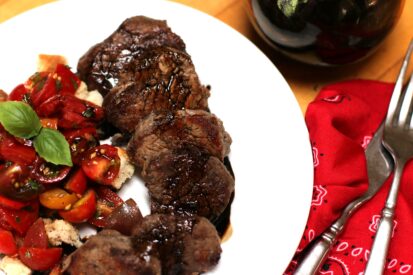
And you should know that balsamic vinegar–including the balsamic glazes like the one below–has legit health benefits. It’s known to inhibit blood sugar spikes, which is good news for diabetics, pre-diabetics, and anyone trying to lose weight. The anti-microbial properties of balsamic vinegar have been studied as well. It’s long been reputed to kill salmonella, and studies confirm this. It’s recently been found effective against h. pylori, the bacteria that causes stomach ulcers. While the words vinegar and ulcer sound like a nightmare combination, balsamic vinegar has been shown to reduce symptoms for stomach ulcer sufferers when eaten as part of a meal. Balsamic vinegar is a very effective for anyone at aiding digestion when eaten with other foods.
You’re welcome!
Balsamic Glaze
Ingredients
- 1 16 oz. bottle balsamic vinegar
- 1 T. brown sugar, or to taste (optional)
Instructions
- Pour the vinegar into a saucepan. Don't use too large of a pan, you may scorch the glaze. Bring the vinegar to a low boil and immediately turn the heat down to a simmer.
- Simmer the vinegar until the liquid has reduced by two-thirds. Watch it closely. It can take anywhere from 20 to 35 minutes or so.
- When the vinegar has reduced taste it. If you like the taste, you're done. If the glaze is unpleasantly tart, add the brown sugar. Stir to dissolve. Store finished glaze tightly sealed in a cool, dry, place

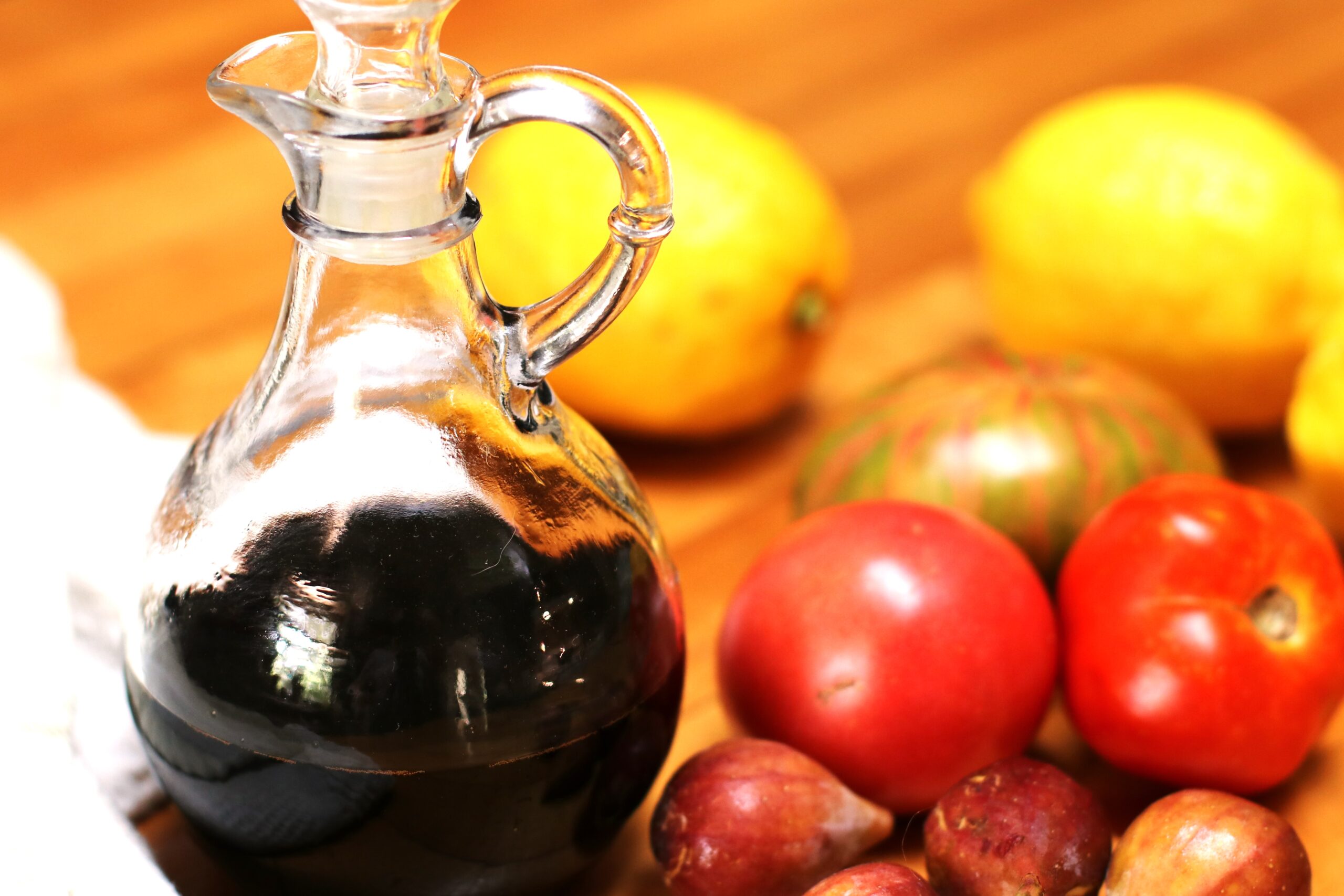
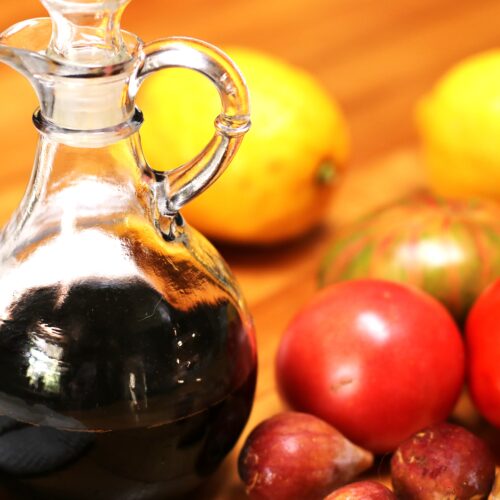










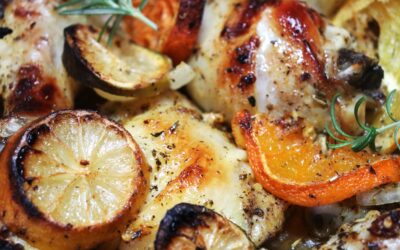
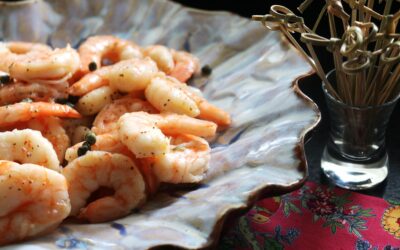

0 Comments
Trackbacks/Pingbacks